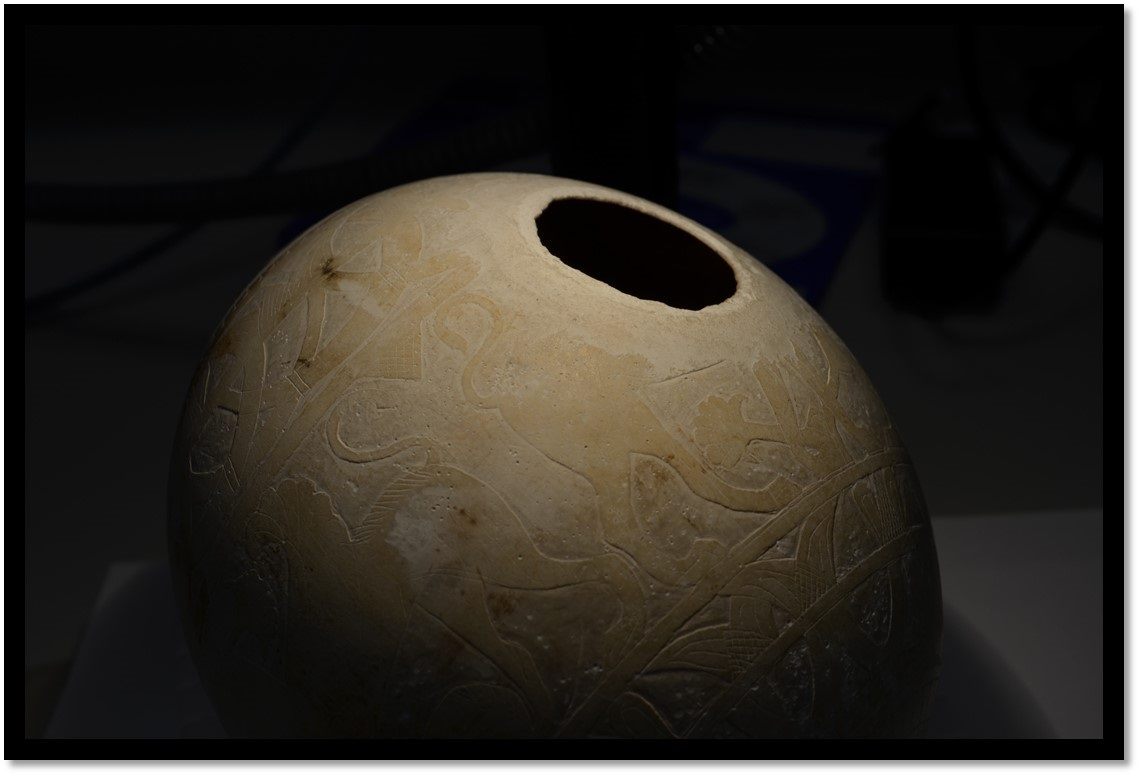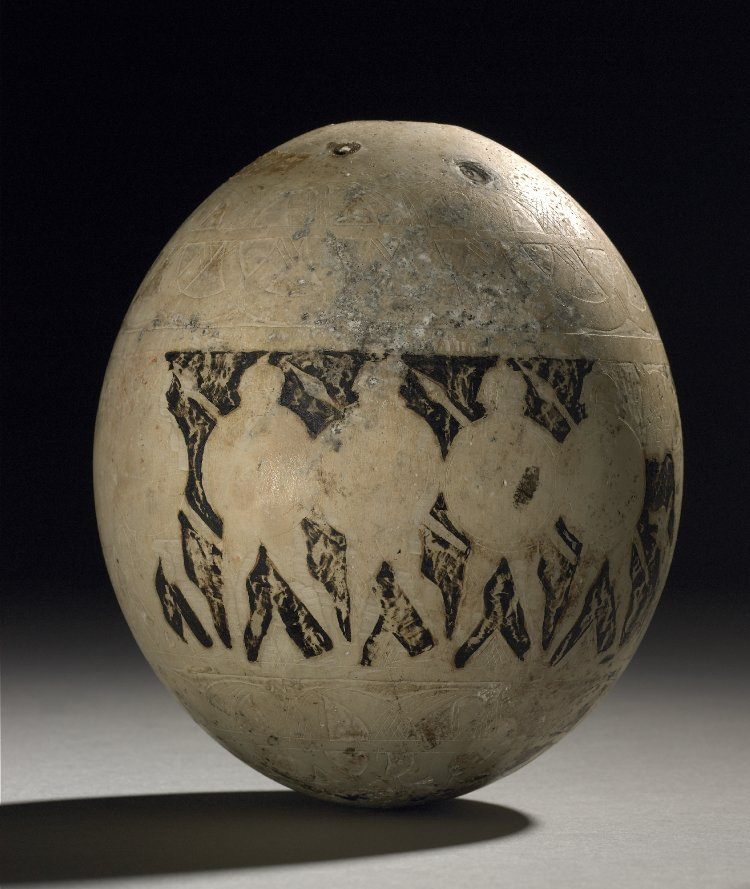When Ostrich Eggshells Were Luxury Goods
Be careful when you collect them.

It’s no mean feat to gather an ostrich egg in the wild. Ostriches can stand up to 9 feet tall and weigh more than 300 pounds, and a single kick from one of their clawed feet can kill a human—or a lion, for that matter. Oh, and they can run faster than you.
But ostrich eggs have long been desirable to people. In addition to their nutritional value—2,000 calories, nearly half protein and half fat—the thick, strong shells have both practical and artistic value. They’ve been used to carry and store water, shaped into arrow heads and tools, and ground into medicine. At a rock shelter in South Africa, researchers found 60,000-year-old fragments of ostrich shell etched with intricate patterns, thought to be early evidence for symbolic thought. Decorated shells—engraved, painted, gilded—have been given as tribute to pharaohs, offered in ancient Greek temples, and placed in graves around the Mediterranean for thousands of years. Even today they adorn homes in North Africa and souvenir shops in South Africa.

Now researchers from the University of Bristol and the British Museum want to know how and where ancient Mediterraneans got their ostrich eggs. “Apart from noting their presence as unusual vessels in funerary and celebratory settings,” said Tamar Hodos, an archaeologist at the University of Bristol, in a statement, “surprisingly little is known about where they actually come from or who decorated them, much less how they circulated.”
Among other tests, the new study is subjecting a variety of eggshells in the museum’s collection to isotope analyses. The tests can tell where the eggs were laid, and what the mother was eating or drinking during gestation, which can, in turn, indicate whether they were collected in the wild or whether the massive birds were raised in captivity to supply the luxury trade in shells.

So next time you spot an ostrich egg—they sometimes show up in farmer’s markets and specialty stores—consider the many ways they’ve been put to use beyond making an omelet that can feed a dozen people.















































Follow us on Twitter to get the latest on the world's hidden wonders.
Like us on Facebook to get the latest on the world's hidden wonders.
Follow us on Twitter Like us on Facebook